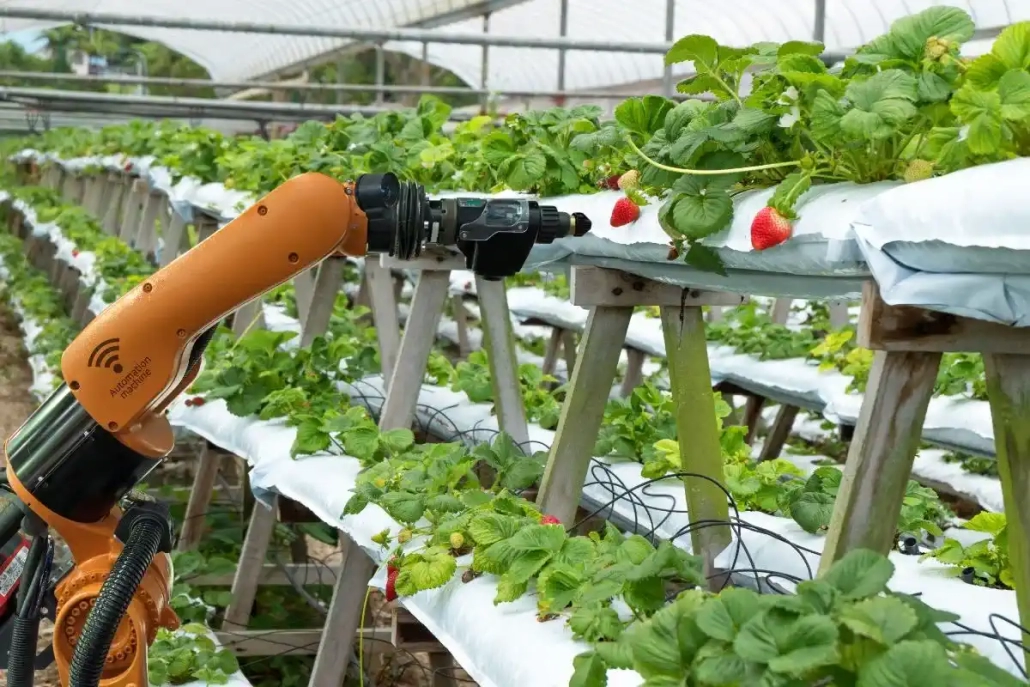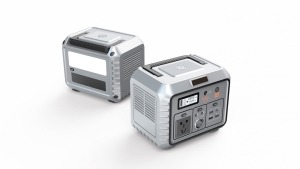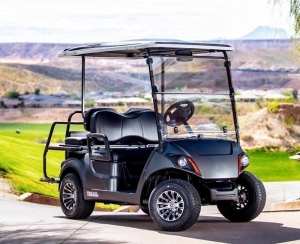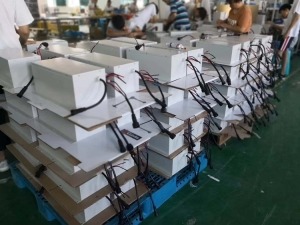Revolutionary Picking Robot: A Guide
Table of Contents
- Revolutionary Picking Robot: A Guide

Introduction to Picking Robots: The Next Wave in Automation
Kicking things off today we’ll start by looking in more detail at precisely what picking robots are.Now, depending on where in the world you happen to be reading this from, you may know them as picking robots, or you may know them as ‘pick and place’ robots. However they are known, just know that they serve the same purpose.A picking robot is a piece of automated machinery that is basically designed to assist with the lifting and placing of items or objects in factories, assembly lines, and warehouses, all over the world, in a number of different industries.When people hear the word ‘robot’ combined with ‘AI’ they automatically think of some dystopian sci-fi movie, such as The Terminator when in reality all these devices are, are glorified lifting machines.Picking up items and moving them from one spot to another is not a process that requires any particular skill, or thought. Not only that, but some items or objects may be too heavy, or too awkward to move by a human. In this instance, a picking robot would be ideal in place of a human.Picking robots will perform these repetitive tasks until they are switched off. They feature hugely advanced features such as sensors, to enable them to detect certain items and lift them off a conveyor belt, and place them somewhere else, such as into a box or shipping crate perhaps.In terms of design, they almost resemble miniature cranes, as they usually feature a picking arm, mounted onto a stable frame, where they will grasp the item, pick it up, and place it in the necessary location.Exploring the Variety of Picking Robots
Despite picking robots, or pick and place robots, being such a common sight in factories and warehouses worldwide, like most types of technology, they come in a variety of different forms.Here are some of the most common types of picking robot you are likely to find in a workplace environment.1. Cartesian
Cartesian picking robots are commonly used in factories, warehouses, and assembly lines. They use X,Y, and Z coordinates (cartesian coordinates) to relocate items in multiple planes.Typically, these are the types of picking robots you would use when you need greater accuracy for your robots, in terms of what they pick up, and where they place it.2. Robotic arm
Up next, we have arguably the most common type of pick and place robot, a robotic arm model.These are a 5-axis robot that simply pick up items and place them somewhere else in one single plane. You can also get 6-axis robotic arms for more complex tasks, I.E for unscrewing items, twisting them, or adjusting them before they are placed in a new location.3. Fast pick
Fast pick robots, as the name implies, work very quickly. These are designed to really enhance workplace efficiency as they pick and place items in a large volume, at a rapid pace.These fast pick robots will easily move more than 300 items per hour.4. Collaborative robots (Cobot)
Wouldn’t it be wonderful if humans and robots could live and work together in perfect harmony? Well, thanks to collaborative robots, sometimes known as ‘cobots’ they can.These picking robots are designed to be utilized in conjunction with humans. They assist the humans in transporting the items to their chosen destination in a safe, timely, and efficient manner.5. Delta robots
Finally, the last type of picking robot that we are going to be looking at today is what is known as a ‘Delta robot’.These pick and place robots are designed to pick up items and place them in a number of predetermined assembly groups or patterns.These are very advanced picking robots as they feature a number of different sensors, and/or vision systems, which can help to select different items based upon their size, colour, or even if they feature any design flaws.The Multifold Advantages of Picking Robots
Now that we know more about what picking robots are, and some of the different types and designs that are out there, we now need to look at what makes them so beneficial.If your business is contemplating whether or not getting a picking robot is the right thing to do, here are several advantages of pick and place robots that should help you make up your mind.1. Cost-effective
One of the main reasons why we’re seeing so many different industries using picking robots as part of their daily operations is down to the fact that they are so cost-effective.Yes, we know that these robots can be expensive when you first buy them, but they will quickly pay for themselves. Not only can they work faster than humans, but it means that you can put your employees in more important parts of the business, rather than having them waste time on something as trivial as picking an item up and putting it somewhere else.So, not only will you save money on labour costs, but as your business becomes more efficient, you’ll actually get more done, in less time. In the business world, time is money.2. Free up manpower
Another great advantage of picking robots, and one that we touched upon briefly beforehand, is the fact that they can help to free up manpower.Picking robots do trivial manual labour that would otherwise require human employees. It doesn’t require any specialist skills, knowledge, or training. By using robots, you can put your employees somewhere else, and have them take care of more pressing, and more skilled aspects of work.3. Safer
Even though picking and packing isn’t considered to be a highly skilled process, it is still very dangerous, especially with larger, heavier, bulkier items.Countless employees have picked up injuries over the years picking and packing. From pulled muscles and back injuries to slips, trips, and falls, a picking and packing injury at work can not only be costly, but more importantly it could be very serious.Robots do not have muscles to pull or bones to break. They can’t slip over or cut themselves, and they can’t be injured. Therefore they are ideal when used for picking and packing.Diverse Applications of Picking Robots
Picking robots are used in a wide variety of different businesses and industries, for a whole host of different reasons.Some examples of popular picking robot applications include the following:1. Packaging
When items are produced in a factory or warehouse, before they are shipped off for purchase, they need to be packaged. Picking robots can take care of this very easily.2. Assembly lines
An assembly line can really streamline a business and make it more efficient. Picking robots are fantastic when used in this manner.These robots take items from one location, I.E a conveyor belt, and place them in another. They can also attach one part of an item to another and can quite literally assemble it.3. Fault detection
Before items are deemed fit and safe for purchase, they first need to be inspected for faults. This is where picking robots prove useful.Picking robots can be equipped with various sensors and can be programmed to detect faults or anomalies in products before they are packed up. Once a fault is detected, the product can then be removed by the robot.The Role of AI in Augmenting Robot Capabilities
Despite there being a lot of negative press surrounding AI, in truth it can still offer many benefits.Picking robots can benefit from AI as a branch of artificial intelligence called ‘machine learning’ can use special algorithms to help the robots to learn from a selection of databases. The more the machines learn from these databases, the better they become.Powering Picking Robots: The MANLY Battery Edge
As effective as picking robots are, all robots and machines need to get their power from somewhere, and often, that somewhere is a battery.If you’re looking for safe, reliable, cost-effective, and efficient batteries to power your robotics and electrical devices, MANLY Battery is the perfect supplier for you.For your warehouse robots, batteries such as the MANLY LiFePO4 range are ideal. These lithium iron batteries, such as the MANLY 24V 30AH LiFePO4 battery have a 10 year warranty, rapid recharge rates, very long lifecycles, slow rates of discharge, and various safety features designed to get the best from your warehouse robots.




















